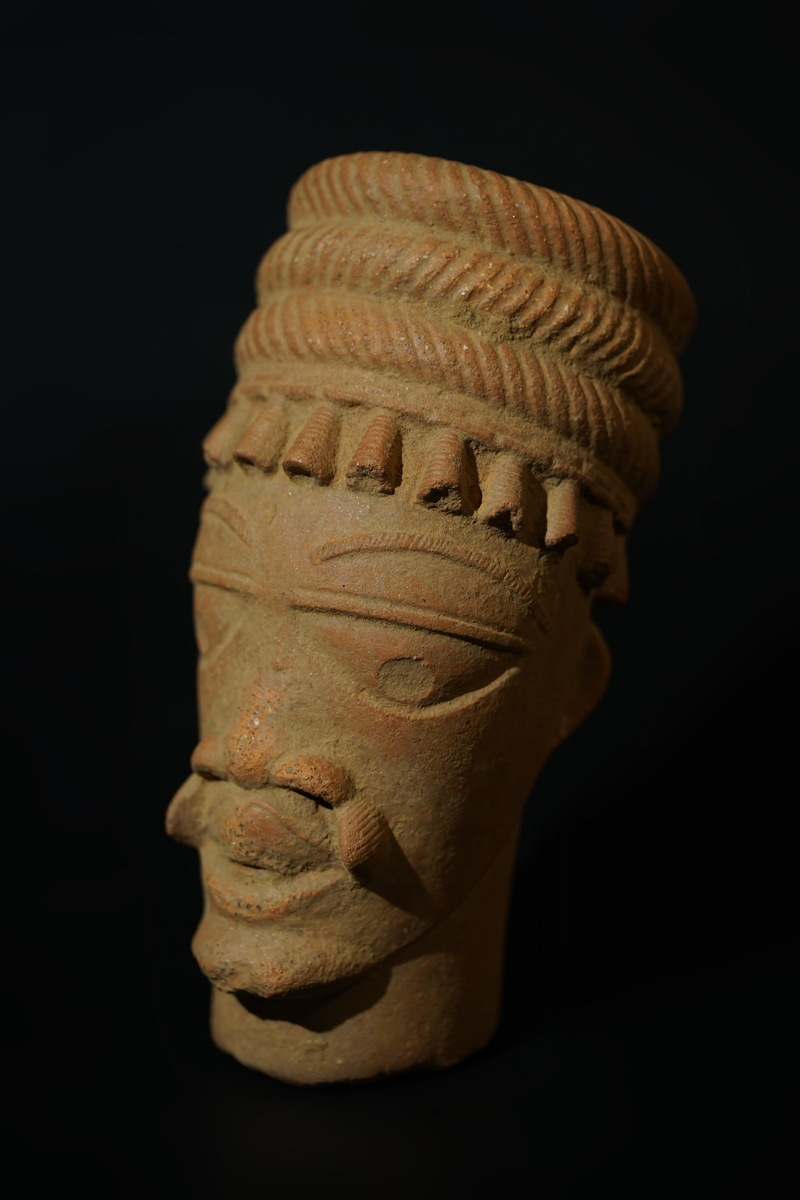|
A male Nok terra-cotta head, with a goatee beneath a full-bodied mouth and a moustache, a nose with prominent nostrils and half-closed eyes with thin eyebrows, small curls form a band around the whole head, the hairstyle above consists of three bulges; some curls are damaged, inside remnants of reddish laterite earth, incl. stand. "Nok, Nok, Noking" on heavens door? Not likely. Archaeological excavations seem to prove that the Nok statues are not from a burial context. Not a single Nok statue was found in a grave or near human remains. However, they clearly represent high-ranking personalities. It is possible that ritual sacrifices were made to the statues but nothing more is really known. Most of the statues are very fragmentary, or made up of many shards, due to their place of discovery, which in many cases is a tin mine.
sold Height: 25 cm |
 photo: wolfgang-jaenicke.com, for more information, please write us an e-mail with the identification number of the photo identification no. FSA01512.jpg |